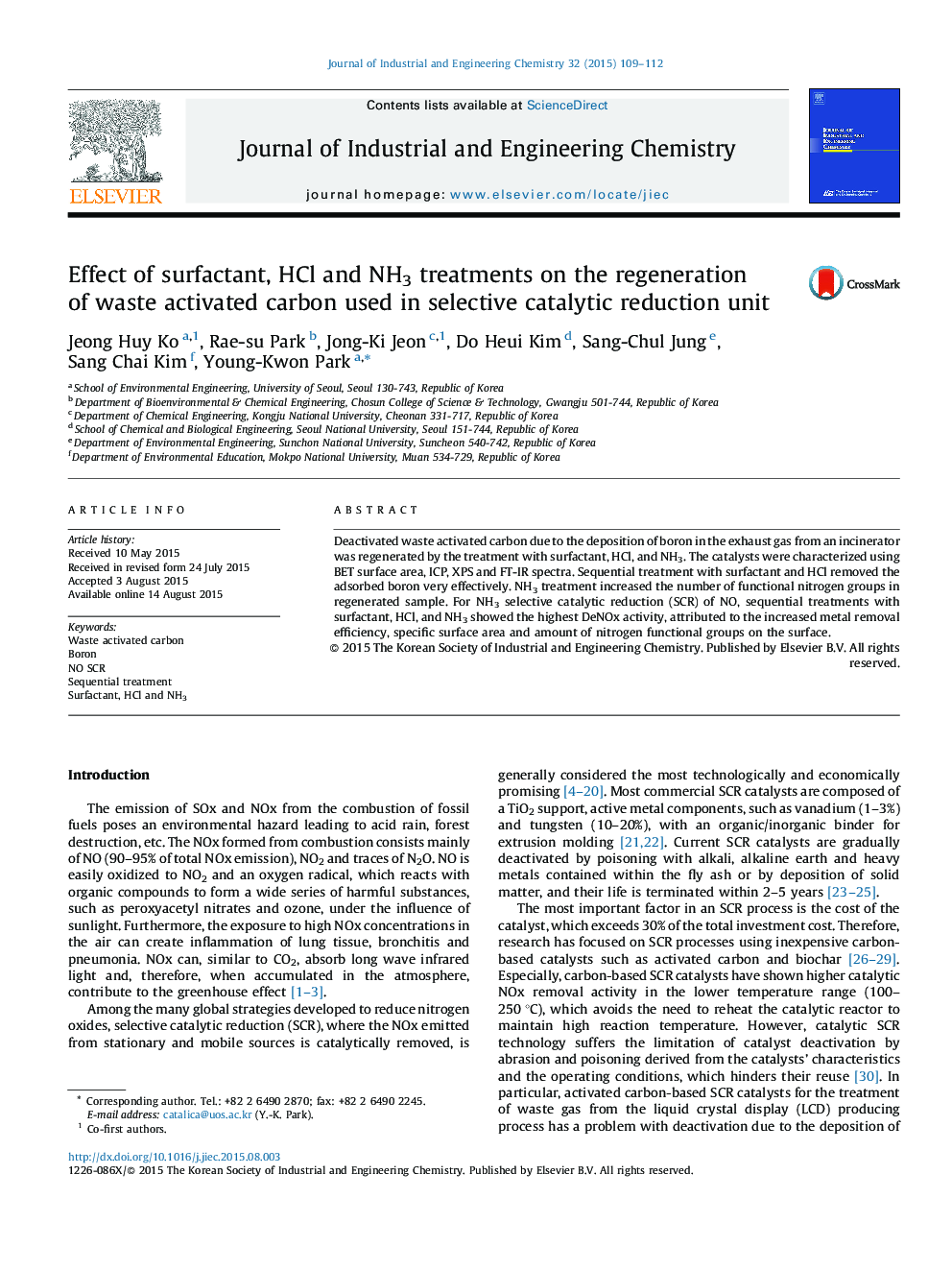| Article ID | Journal | Published Year | Pages | File Type |
|---|---|---|---|---|
| 227041 | Journal of Industrial and Engineering Chemistry | 2015 | 4 Pages |
Deactivated waste activated carbon due to the deposition of boron in the exhaust gas from an incinerator was regenerated by the treatment with surfactant, HCl, and NH3. The catalysts were characterized using BET surface area, ICP, XPS and FT-IR spectra. Sequential treatment with surfactant and HCl removed the adsorbed boron very effectively. NH3 treatment increased the number of functional nitrogen groups in regenerated sample. For NH3 selective catalytic reduction (SCR) of NO, sequential treatments with surfactant, HCl, and NH3 showed the highest DeNOx activity, attributed to the increased metal removal efficiency, specific surface area and amount of nitrogen functional groups on the surface.
Graphical abstractFigure optionsDownload full-size imageDownload as PowerPoint slide
